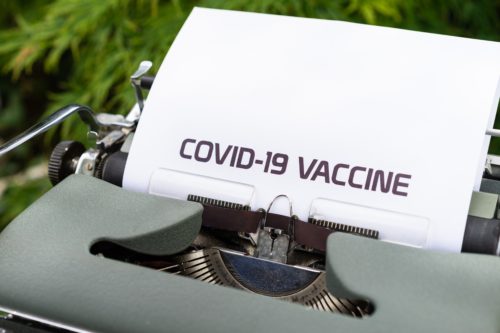
Vaccines for COVID-19 are the focus of the moment – politically and scientifically speaking. On the political front, there has not only been jockeying to try to squeeze the square peg of a vaccine development timeline into a round hole of political convenience, there is also skepticism expressed by a wary public that the process has become politicized – an unfortunate impression to be sure. Scientifically, there was the big news that a vaccine trial had experienced a serious adverse event bringing a pause to bear in its continuation, likely throwing further cold water on the political side of the equation. But eventually vaccine candidates will likely emerge as successful, developed and evaluated according to the FDA guidance laid out on the subject. What then? Who will take the vaccine and at what rate?
That question has been the subject of numerous polls which have found widely varying degrees of willingness among the public to the idea of taking a vaccine – an opinion that may be further influenced by the emergence of adverse events in the clinical trials. One poll found one-third would not take a vaccine; another found fewer than half; and one that found that only one in five would take a vaccine.
There are perhaps three major categories of vaccine outlook: (1) Those who will be early adherents and seek and get vaccinations as soon as the distribution guidelines allow for it; (2) those who will hang back and wait to see what happens but may eventually take a vaccine; and (3) those who are committed anti-vaxers who will refuse to take a vaccine under any circumstances. You do not need to expend resources on the first category and you will likely waste them expending efforts on the third category. It is those folks in the middle who are the most important to communicate with. It is their sentiments, motivators and beliefs that need to be examined.
The New England Journal of Medicine published an important Perspective piece – “When Will We Have a Vaccine? – Understanding Questions and Answers about COVID-19 Vaccination” that explored two primary parts of the question – when will there be a safe and effective vaccine and when it does become available, who will take it. With respect to the latter, the article points out that to achieve the societal aim of ending the pandemic, then uptake will have to be strong to achieve the goal of herd immunity, even when combined with the huge numbers of people who have already been infected. While noting that a range of trusted people may be utilized as trusted messengers to promote vaccination, healthcare professionals are likely to be among the most persuasive. And moreover, the article makes clear we need to think about the role of communications.
When it comes to that, some additional insight comes from a Gallup poll also published this week which looked at regard for business and industry sectors. Last year the pharmaceutical industry was ranked at the very bottom. This year there was movement and the industry is now the second-lowest regarded industry, just above the federal government, with 49 percent of respondents viewing the industry negatively and 34 percent having a positive outlook, a net negative of 15 percent. However, of note was the change in the ranking of the healthcare industry which went from the third-lowest ranking last year to somewhere in the middle with a 13-point increase to 51 percent favorability. It was the first time in the 20 year history of this Gallup poll that the healthcare industry was viewed with more positivity than negativity. It is perhaps a direct result of the extreme effort and sacrifice that has been witnessed by healthcare workers in the face of the pandemic.
Bottom line – communications planning needs to be taking place in earnest and assets should be cultivated now that will allow for credible outreach to that middle group of people who may be uncertain. The surveying of sentiment needs to be targeted and precise and consistent. The underpinnings of any campaign need to be evidence-based. Just as we can’t afford to miss the target with respect to the vaccine itself, we do not have the luxury of missing it with communications efforts around the vaccine. And the message is not only important, but so is the messenger. Looking to the rankings of the Gallup poll mentioned above, with the great advance made this year among healthcare workers and other indications that people do not want information about the pandemic coming from government officials or non-scientists, health care workers emerge as the obvious messenger. That needs to be coordinated now. Health care workers who have been on the front lines and bravely witnessed and endured the very worst this pandemic has had to offer may be the most credible. To that end, among others, medical societies should be going out of their way to finding them and to be prepared to offer communications guidance to their membership related to vaccines. Additionally, the next likely most credible source of convincing information will be the experiences of friends – friends who have been vaccinated. They will have influence both in-person and via social media. Their voices will need to be amplified. That means outlining a very cohesive, convincing and comprehensive social media strategy. Because while the main battle today is the one in science – to jump the hurdles of research and discovery, the next effort will be in convincing people to use the vaccine and that will be a communications effort. Like the science, it is best grounded in research and evidence. And like the science, the research and development of communications should be taking place now.
Photo by Markus Winkler on Unsplash

